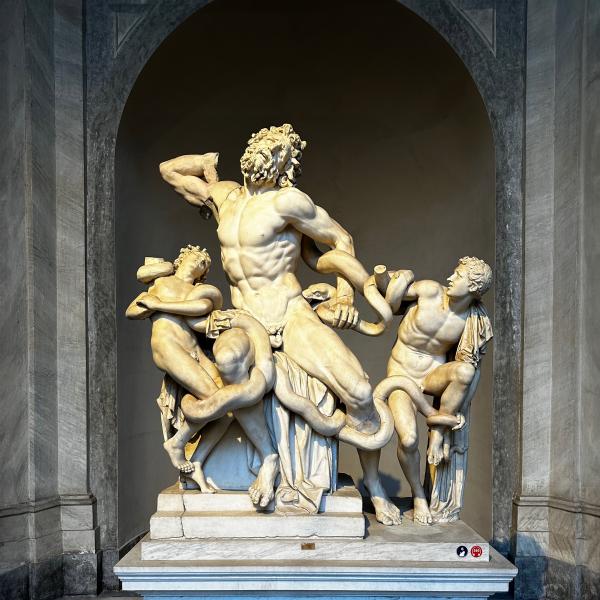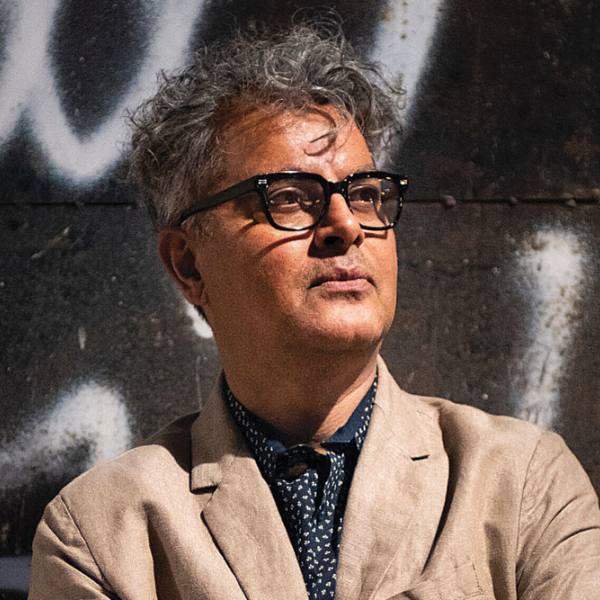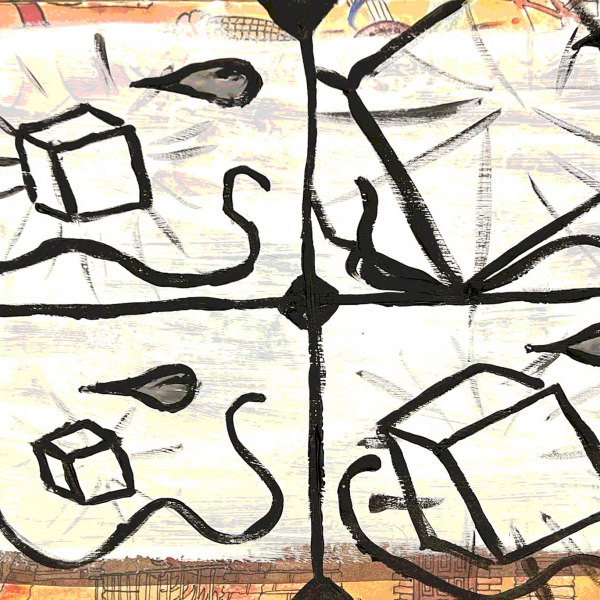by Amy Pawl
Senior Lecturer in English
Advisory Board Member, Children's Studies Minor
Every fall, tributes to J. K. Rowling pile up on my desk. This happens not because I have been mistaken for the author (I can imagine far worse fates), but because I have asked the students in my children’s literature courses to write about a memorable book from their childhood. Of course, they mention other books as well — The Giver, Little Women, Walk Two Moons — but only the Harry Potter series has had a book appear on every single list I’ve compiled. Students praise the series for capturing their imaginations, for teaching lessons about friendship and integrity, for inspiring them to love reading. They remember gathering with family members for read-alouds and competing with classmates to see who could finish the new book first after a midnight release party. Some students mention a favorite character or a favorite magical object: wands, brooms, time-turners and chocolate frogs emerge from their nonmagical pens as they write out their literary memories. From all of these accounts, one clear theme emerges. My students want what all readers of beloved books have wanted: more.
The desire for more is a persistent force in the history of children’s literature. Readers, young and old, simply do not want the world of the book to end. The most obvious way to answer this desire is by the production of sequels. But the effort to provide more can take many other forms. In the 19th century, fans of Alice’s Adventures in Wonderland could purchase the “Wonderland Stamp Case,” endorsed by Lewis Carroll and sporting a transformable image of Alice holding the Duchess’ baby (or pig, once you pulled the tab). A stage version of Alice followed, as did an early silent film by Walt Disney several decades later. In 1955, when Disney opened his first park, he created a space that can be thought of, in many ways, as a 3-D, pop-up anthology of children’s literature classics: The visitor in the 1950s could raft on the Mississippi with Tom and Huck, fly out the nursery window with Peter Pan, motor past police officers with Mr. Toad or spin through a mad tea party with Alice. Universal Studios has gone to even greater lengths today, recreating whole sections of Hogwarts and entire rows of shops in Hogsmeade. Wands choose children, butterbeer is consumed, and readers’ dreams come true. Online, Harry Potter enthusiasts can visit the aptly named “Pottermore” site to be sorted into the proper House and to discover the form that their Patronus would take (mine is a dolphin).
When it appeared in 2001, after the fourth book in the series, Fantastic Beasts and Where to Find Them offered “more” in a very different manner. Instead of bringing the reader into the world of the book, it brought a book from Hogwarts into the world of the reader. Like Quidditch Through the Ages, published the same year, Fantastic Beasts does not continue the narrative of the series. Instead, the text as object seems to have been magically transported from the shelves of Hogwarts to the hands of the child reader. Unlike a Wonderland stamp case or a T-shirt with Harry Potter’s image on it, items that the stories’ protagonists would never possess, the child’s copy of Fantastic Beasts becomes a border-crossing artifact. On its bright-red cover is a tattered sticker identifying the book as the “Property of: Harry Potter.” Even better, the inside of the book bears the marks of other young readers. An angular, hand-written scrawl on the first page tells us that the book is “shared by Ron Weasley because his fell apart.” Hermione then answers Ron in a different hand, and the textual graffiti continues from that point forward (ranging from a game of hangman to humorous comments about Hagrid). The reader can thus become part of this circle of friends — sharing Harry’s actual book, reading what he read.
And what Harry reads is not an adventure story but a scholarly reference book. Modeled on a medieval bestiary and organized in list form from A–Z, Fantastic Beasts offers detailed entries on more than 70 species of magical creatures, beginning with Acromantula and ending with Yeti. In a manner characteristic of the way her imagination works throughout the series, Rowling succeeds in making magic feel more plausible and real by imposing order and even bureaucracy on it. Each creature has a Ministry of Magic danger rating (from “Boring” to “Known Wizard Killer”). But the real magic here is that Rowling has glamorized scholarly apparatus. In a way that would warm any academic’s heart, she makes research and documentation fun and exciting. Footnotes? Boring, but not if they explain how Chizpurfles attack electrical devices in Muggle homes. Block quotations from secondary sources? Potentially tedious, but not when enlivened by Wizards’ Council debates and a timely slip on some Porlock dung. A preface is not to be skipped if it is written by Albus Dumbledore. On it goes.
This brief but dense book helps to familiarize children with the forms and purpose of synthesis and source attribution. It also begins with a demanding exercise in critical thinking. In an introductory chapter titled “What Is a Beast?” the implied Venn diagrams practically leap off the page as Rowling recounts the historical struggle in the wizarding world to distinguish Beasts from Beings. Finally, despite or perhaps because of its small print and ambitious vocabulary, the book invites and repays close study. Its magical content arouses curiosity, while its field-guide format promises mastery.
Remarkably, this 42-page book is now poised to give us much, much more. In what must be a record when considered as a text-to-reel ratio, Rowling and Warner Brothers have announced that this slim volume will give rise to five feature-length films. The first of these, Fantastic Beasts and Where to Find Them, debuted in theaters on November 18. As the film opens, it becomes crucial to recall that the highly talented but somewhat self-effacing author of the original book is — according to its cover — not J. K. Rowling but Newt Scamander. Transformed (without the aid of polyjuice potion) from author to protagonist, Newt is an improbable hero. What we know about him from his book is limited: He has a penchant for traveling “from darkest jungle to brightest desert” (promising), he likes footnotes, and he hopes the pages of his book will promote a fuller understanding of the beasts he loves. From these slight details emerges the figure who holds the key to our return to the world of Harry Potter, more than five decades before the birth of the Boy Who Lived.
Fantastic Beasts and Where to Find Them is a visually spectacular and dramatically divided film, in which scenes of delightful magic and comic mayhem are juxtaposed with scenes of threat and destruction. The resulting shifts in tone and mood can be jarring, as the film presents (often literally) a light side and a dark side. The lighter material seems to be drawn most directly from the book. Trailers have hinted at the wonders of Newt’s suitcase, and as he arrives in 1920s New York, disembarking from a transatlantic steamer, our eyes (and the camera’s gaze) are on this interesting accessory and its owner.
Eddie Redmayne is charming as the future author, giving us a portrait of an engaged naturalist and preservationist who is devoted to his creatures. His suitcase is a veritable cabinet of curiosities, a kind of leather-bound Noah’s ark. Newt himself has the talents of Dr. Dolittle, able to communicate with miniature Ent-like creatures, saucer-eyed mooncalves and scaly occamys; he even knows the mating dance of a one-ton rhinoceros-like beast with a glowing forehead. When a fuzzy niffler escapes in pursuit of the glittering objects that attract it, showers of gold coins, diamond necklaces and emerald rings fill the screen, leaving Newt scrambling with affectionate concern after the small animal. Such scenes provide viewers with the pleasures of a fairytale menagerie.
In sharp contrast is the film’s darker side — visually, morally and emotionally. Many scenes are shot at night or underground. New York teems with sinister figures and forces, in both the real and the magical worlds. Factions have taken to the street to denounce their enemies in an atmosphere of social and religious intolerance, reminding us of the rise of fascism in the era. In one disturbing scene, two characters face swift capital punishment at the behest of the Magical Congress of the U.S. Echoing the social strife, a dark and terrible entity capable of splintering walls and churning through pavement is tearing up the physical fabric of New York.
— Amy Pawl, children's literature scholar
Light and dark elements have shared the screen and page in Rowling’s prior works, of course, but this time is different. The two sides feel more disconnected than they were previously, perhaps because we lack the framework of Hogwarts (with its routines and regular progression of terms) to give structure and unity to the story. Emphasizing this divide is the startling position of children in the film: They inhabit only its dark side and encounter none of the delight woven by magic. Harry and his friends may have to face the evils of Voldemort, but they also experience magical feasts and the triumph of friendship, thus weaving light and dark together. Here, the film’s children do nothing but suffer. We see among other things, in a manner reminiscent of Dolores Umbrage, the repeated laceration of a boy’s hand. The torment of children becomes, in fact, a major plot point of the film, and its severity is not notably relieved by the pleasure the adult characters are allowed to take in magical touches like floating pastries or loyal bowtruckles.
The film thus sends out mixed signals regarding its audience. Some young children are likely to find the dark portions of the film to be too intense and frightening; these children (and some adults) will wish they could spend more time admiring the fantastical beasts. At the same time, young children are surely the intended targets of the tie-in marketing that includes Lego sets and toy nifflers. The main characters, however, are in their twenties, matching the general age of the readership that grew up with Harry. These older viewers can perhaps see themselves reflected in Newt, Tina and their companions as they face a dangerous, changing world. (Though Tina is no Hermione — we can only hope that her role will be stronger in the next film.) In many ways, the disparate and even contradictory elements of this film again enact the promise of more — more films, more toys, more for everyone. The film may be most interested, then, in laying the groundwork for what is to come. Newt’s suitcase, in this context, becomes a metaphor for “more,” an image of plentitude: It is bigger on the inside than it appears; one can always reach in and find something new. This is clearly true of Rowling’s imagination, and for this we can all be grateful.




